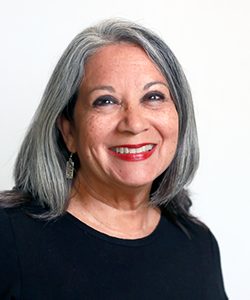
08 Aug Learning where this all started
I was the little girl who loved going to school and begged her parents to put her in first grade when she was barely old enough to be in kindergarten. I was the little girl who had a lot more fun playing “office” than playing “house.” Come to think of it, I still do. And as far as school goes, well, I embrace every chance I get to learn things, whether in a structured environment, like school, or unstructured, like reading on my own. I recently thought, “I want to learn more about the law,” not because I want to be a lawyer but because I have some questions about what we do as interpreters in court, and where we stand in the big picture. I think I can find the answers only if I go back, way back, into the history of interpreters in our U.S. court system so as to understand how we ended up here. When I look around, to be honest, it seems like we’re moving backward rather than forward.
So, thanks to some very supportive friends and family, I am not only enrolled in a legal studies program (all online), but I also just discovered that as a student I have access to LexisNexis and Westlaw! (Cue happy music.) Of course, I immediately started to look up all the cases that have anything to do with court interpreters or interpreting in court, and since I’m still getting the hang of this, the oldest case I could find at first was a failure to appoint an interpreter from 1907. Then, as I got a little better at this searching thing, I started to find cases dating back to the 1800s. And as I kept on figuring out this LexisNexis legal search engine, I found a 1795 case that mentions a statute in Virginia providing “that interpreters may be sworn truly to interpret, when necessary.” (Claiborne v. Parrish, 2 Va. 146.)
 Notice that even when the country was still very young (barely nineteen years old), there was already a law in the books in Virginia, and apparently in West Virginia too, addressing interpreters in court. I have yet to find those statutes (Va. Code 1887, ch. 164, § 3357; W. Va. Code, ch. 130, § 30,) but I will keep looking—and I will share when I do find them, if you are as curious as I am. What really strikes me is the awareness—and highly non-judgmental attitudes, based on the texts I have found so far in these court opinions—of a need for interpreters because of the many different languages spoken by litigants, witnesses, and defendants. There’s German, Portuguese, Italian, English, and let’s not forget the languages of all the Nations already here.
Notice that even when the country was still very young (barely nineteen years old), there was already a law in the books in Virginia, and apparently in West Virginia too, addressing interpreters in court. I have yet to find those statutes (Va. Code 1887, ch. 164, § 3357; W. Va. Code, ch. 130, § 30,) but I will keep looking—and I will share when I do find them, if you are as curious as I am. What really strikes me is the awareness—and highly non-judgmental attitudes, based on the texts I have found so far in these court opinions—of a need for interpreters because of the many different languages spoken by litigants, witnesses, and defendants. There’s German, Portuguese, Italian, English, and let’s not forget the languages of all the Nations already here.
There is a case from 1879 in Colorado which, “[o]n appeal, the court ruled that under §§161, 162, the inability on the part of persons called as jurors, to speak the English language, and to understand it when spoken, was not necessarily a disqualifying fact.” (Trinidad v. Simpson, 5 Colo. 65.) This was about three decades after the signing of the Treaty of Guadalupe Hidalgo, and there were cities along the Southern territories in which the majority of residents were former Mexican citizens whose first language was Spanish. They served as jurors because there were very few residents in those communities who could speak and understand English. It appears, from the language in the Trinidad v. Simpson opinion, that they could be provided with interpreters or perhaps the proceedings in court were conducted in Spanish.
I found a few other interesting court opinions. The privileged communication between attorneys and their clients extends to the interpreter since at least 1859. (Goddard v. Gardner, 28 Conn. 172; Sample v. Frost, 10 Iowa 266.) Then, in an 1877 case, the court held that an expert could not be compelled to testify without compensation. (Buchman v. State, 59 Ind. 1.) Although that case was about an expert medical witness who refused to testify without compensation, it could very well apply to interpreters if compelled to testify. Of course, that requires a bit more research to see how that holding by the court may have changed over the course of the last century.
My favorite so far is a quote from Justice Oliver Wendell Holmes, Associate Justice of the U.S. Supreme Court, in Towne v. Eisner (1918) as quoted in the 1942 case of State v. Vasquez (101 Utah 444): “A word is not a crystal, transparent and unchanged; it is the skin of a living thought and may vary greatly in color and content according to the circumstances and the time in which it is used.”
The Vazquez court added: “Degrees of understanding may present themselves between that of complete comprehension of the language to that of minor matters. The question, not properly heard or understood, may bring forth an answer that might turn the scales from innocence to guilt or from guilt to innocence. Then, too, the answer given might be made in words not entirely familiar or understood by the defendant. (….) While English has comparatively few inflections, either a prefix or a suffix mistakenly applied or interpreted may change the meaning of a whole sentence.”
I have to wonder, why is it that something so clear to these judges in the early part of the last century does not seem to be so clear anymore to the bar and bench in this century?

Janis Palma has been a federally certified English<>Spanish judiciary interpreter since 1981. Her experience includes conference work in the private sector and seminar interpreting for the U.S. State Department. She has been a consultant for various higher education institutions, professional associations, and government agencies on judiciary interpreting and translating issues. She worked as an independent contractor for over twenty years in federal, state, and immigration courts around the U.S. before taking a full-time job. Janis joined the U.S. District Courts in Puerto Rico as a staff interpreter in April 2002 and retired in 2017. She now lives in San Antonio, Texas, embracing the joys of being a grandmother. She also enjoys volunteering for her professional associations, has been on the SSTI and TAJIT Boards, and is currently the past Chair of the NAJIT Board of Directors. Contact: palmajanis88@gmail.com
Main photo (cropped) by Shahnawaz Sid at flickr, under CC BY 2.0. Body photo from “La Argumentación Oral” by Fernando Boj Corral at Complemento agente, under CC BY-NC-SA 3.0.

I enjoyed reading your most interesting post involving history; but regret that I am not able to answer your question. about judges in this 21st century. There are now so many new questions about which answers are still not there as the United States continues on through its current radical and fundamental transformation.
You are so right, Clarence. And I don’t think anyone can answer the question at the end, but I’m glad you enjoyed reading the post.
Great and fascinating research! Thank you Janis
Thank you, Heidi. I am having great fun “discovering” all this.
What fun! Just to make you nuts, let me add a couple of other possible routes forward. I’ve always been especially frustrated with the use of “translator” instead of “interpreter” only to find that this seems to be a fairly recent phenomenon in the US. Reading a lot of history about the westward advance from Lewis & Clark on, there was a huge use of interpreters by the U.S. Army and others. The material I’ve read always refers to “interpreters”, so our ancestors apparently knew better. Especially interesting is the apparent fact that the main interpreter hired for the L&C Expedition (not Sacagawea, but he was her husband!) was one of the most highly paid members of the crew!
Another fascinating source is Kate Holladay Claghorn’s 1923 book, THE IMMIGRANT’S DAY IN COURT. It’s a gold mine of information about what was happening in the courts in the early twentieth century. Have fun!!!
Yesssss!!!!! I noticed that, too, Robert Joe! There is a lot on Virginia’s colonial history I’ve been reading as I’m looking for that 1795 statute about swearing in the interpreters in court and they always refer to “interpreters” not “translators.” I don’t know when or why it changed and now everyone seems so confused.
Very interesting….thank you for sharing and more power to you!
Than you so much!
Speaking of beginnings, I would like to recommend highly to all interpreters the book about language by Professor Bellos of Princeton IS THAT A FISH IN YOUR EAR in which the earliest days of simultaneous interpreting in the modern era, at the Nuremberg trials, are described, and the proEra,, who is himself a distinguished translator, says some very complimentary, and of course true, things about interpreters.
A great book, indeed, Diana. Thank you for mentioning it.
Speaking of Beginnings, I recommend highly to all interpreters the book on Language by Professor Bellos of Princeton IS THAT A FISH IN YOUR EAR in which the earliest days of simultaneous interpreting in the modern era at the Nuremberg trials are described and the professor says some very complementary and of course true things about us simultaneous interpreters
“I have to wonder, why is it that something so clear to these judges in the early part of the last century does not seem to be so clear anymore to the bar and bench in this century?”
Could it be that in the early days of the last century, more judges spoke more than one language as compared to today’s judges? Those who are not at least bilingual “don’t know what they don’t know and they don’t know that they don’t know!” I know that, at least for me, every nugget I learn in any language opens a whole new window of curiosity and learning.
Janis, the Hispanic Bar Association just issued a call for articles, deadline soon. I believe this post should be read by their members.. Un abrazo a sana distancia, José